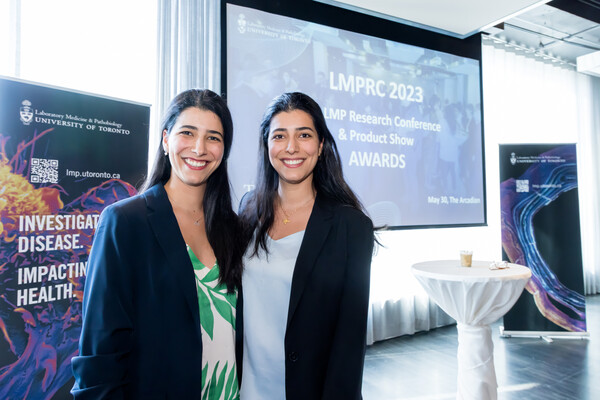A team of basic and clinical researchers seek to protect the heart during breast cancer treatment

Breast cancer is the most common cancer in Canadian women and a leading cause of cancer death.
While early screening and new therapies have increased cancer survival, treatment can, unfortunately, have devastating effects on the cardiovascular system. Some aggressive forms of breast cancer treatment can have a reported incidence of 10-40% of cardiotoxicity (i.e. heart dysfunction) which impacts completion of cancer therapy.
Cardiotoxicity is difficult to predict and is often discovered only after significant cardiac injury has occurred, resulting in many older breast cancer patients developing heart failure and facing mortality from the treatment itself, rather than the cancer.
Dr. Jason Fish, Associate Professor in the Department of Laboratory Medicine & Pathobiology and Senior Scientist at the Toronto General Hospital Research Institute, along with co-principal investigator Dr. Dinesh Thavendiranathan, an Associate Professor in the Department of Medicine, a Scientist at Toronto General Hospital Research Institute (TGHRI), and Director of the Ted Rogers Program in Cardiotoxicity Prevention, hope to change this.
They have just been awarded a five-year grant from the Canadian Institutes of Health Research (CIHR), along with other collaborators such as Dr. Sara Vasconcelos, Assistant Professor in LMP and the Institute of Biomedical Engineering.
How changes to the cells that line blood vessels can predict what will happen in the heart
Dr. Fish is an expert in extracellular vesicles (EVs) – small, secreted membrane-bound structures that carry a molecular cargo of proteins and microRNAs and can participate in cell-to-cell communication. These are secreted by all cell types, but Dr. Fish’s lab focusses on their production by the endothelium, the lining of blood vessels.
Cardiomyocytes are the cells that control muscle movements in the heart – known as the ‘workhorse’ of the heart. Dying cardiomyocytes in the heart are an indicator of cardiac damage, but Fish points out, “by the time you see these cells in distress, it’s often too late to make a difference.”
Instead, his research focusses on the extracellular vesicles that are made by the endothelium. Chemotherapeutics are delivered into the blood, so the cells lining the blood vessels are the first cells to be exposed to these toxic drugs. They may be the first cells to become dysfunctional, which prevents their communication with the cardiomyocytes, an important factor for the cardiomyocytes to stay healthy and active. By measuring the contents of EVs made by the endothelium, the team hopes to be able to better understand this cellular communication and to identify early biomarkers of cardiovascular dysfunction.
“We hope to be able to determine key biomarkers from these cells for an early warning system to identify which breast cancer patients are at risk of developing cardiotoxicity long before we see symptoms,” says Fish.
The project was initiated by Dakota Gustafson, PhD candidate in the Fish Lab, who specialises in studying the biomarkers. Also key in the Fish Lab is Crizza Ching, a PhD candidate from the Institute of Medical Sciences (IMS) who will focus on deciphering the communication between the endothelium and cardiomyocytes.
- Read more about Dakota in Faces of U of T Medicine: Dakota Gustafson
A collaboration across basic and clinical research
Dr. Thavendiranathan and Dr. Fish have been working together for several years. Through a previous CIHR funded clinical study of 200 women with breast cancer, Dr. Thavendiranathan has been imaging their hearts and the team have been taking blood samples at regular intervals to study biomarkers and monitoring the development of any cardiotoxicity in the group.
“We have been collecting data on these patients for a long time so we have a fantastic opportunity to study these biomarkers throughout treatment,” expands Fish, “We have been studying a sub-set of the over 1,200 blood samples but this funding will now allow us to look more in depth at the whole dataset.”
To help investigate the massive amount of clinical and biomarker data that they are generating, the team will expand to include Steve Fan, a biostatistician at the Peter Munk Cardiac Centre, who will apply machine learning to their rich molecular data sets to try and identify patterns that are not obvious to the human eye.
This combination of basic and clinical research will be key to finding a novel approach to a long-existing clinical problem explains Fish, “Clinicians have been working on this for some time. What our research adds is emerging biomarkers that clinicians would not necessarily look at.”
Hope for healthy hearts of breast cancer patients
“It is a very fine balance in finding a treatment that works against the cancer but has a limited effect on the heart,” adds Fish.
The hope is to find a way to identify patients at a very early stage of treatment who have a particular molecular signature indicating they are at a higher risk of cardiotoxicity.
“We then could possibly develop treatments that would protect the heart, like a cardioprotective therapy. This would make a huge difference to the long-term cardiovascular health of breast cancer patients.”
On being awarded the CIHR grant, Dr. Fish is delighted that the team can now progress and expand this area of research.
“I am deeply humbled as the funding landscape is so competitive right now. I’m looking forward to building on our momentum and concentrating on the science rather than writing grants for a while!”
See also
Will we ever see a future free from breast cancer?
For more on CIHR funding in LMP
LMP researchers awarded CIHR grants
A community of support helps a new researcher gain CIHR funding
We recommend that all faculty members take advantage of the following support in the Temerty Faculty of Medicine.
- Pathway Grant Program: bridge funding for research projects needing some support.
- Temerty Medicine's grant editing service.
The original clinical study and preliminary data leading to this CIHR grant were funded by the CIHR, the Peter Munk Cardiac Center, and the Heart and Stroke Foundation of Canada.



